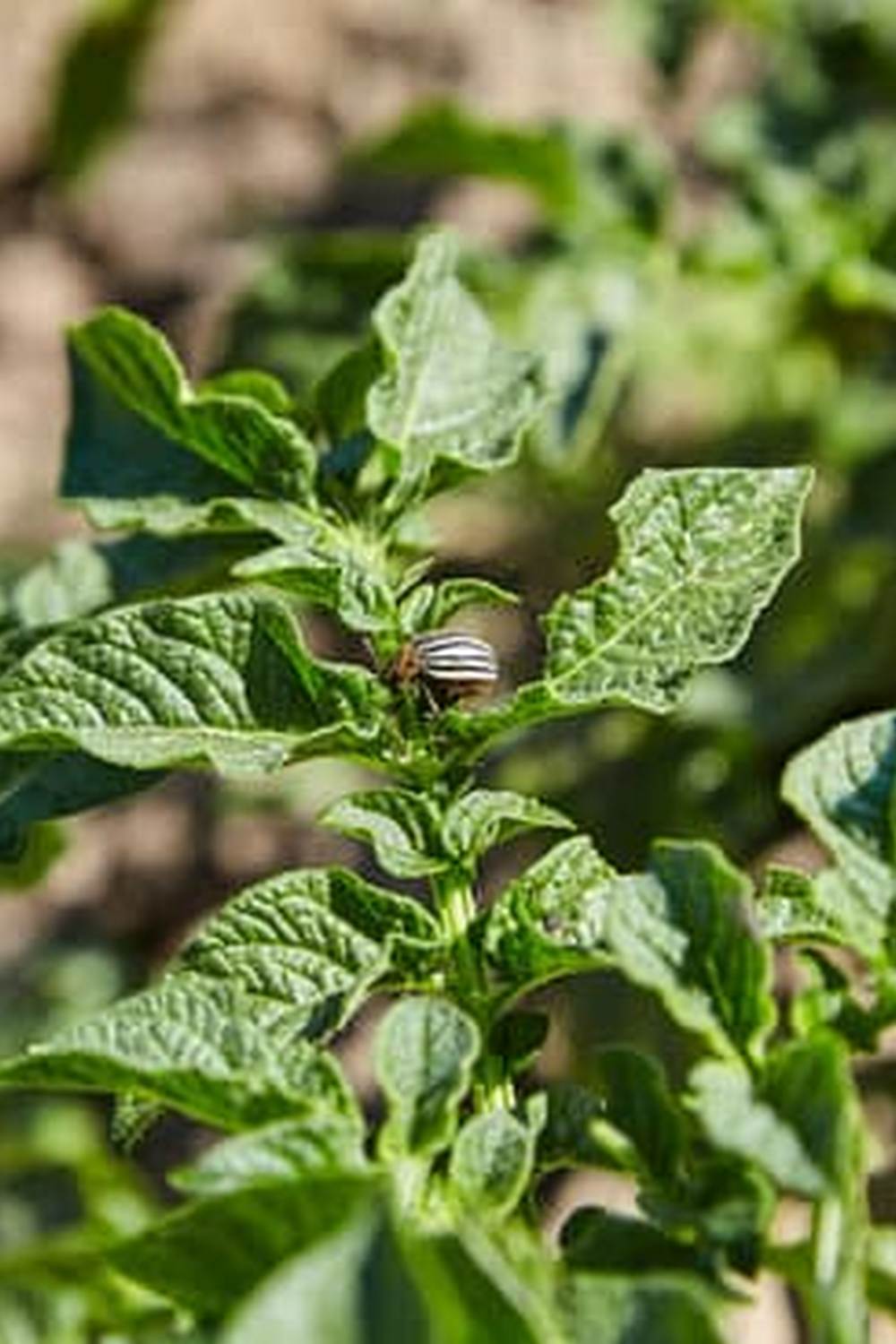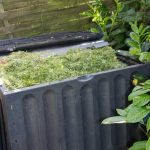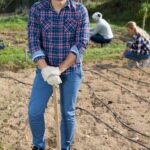Sevin granules are a common choice for gardeners looking to control pests in their gardens. These granules contain the active ingredient carbaryl, which effectively targets a wide range of insects that can damage plants. However, many gardeners wonder, “Is Sevin Granules Safe for Vegetable Gardens?” It is essential to understand the potential risks and benefits associated with using Sevin granules in vegetable gardens.
Carbaryl, the active ingredient in Sevin granules, works by disrupting the nervous system of insects upon contact or ingestion. While this makes it an efficient pesticide against pests like beetles, caterpillars, and aphids, there are concerns about its impact on beneficial insects and other wildlife in the environment. Research has been conducted to examine the effects of Sevin granules on vegetables and surrounding ecosystems to provide a better understanding of its overall safety.
Gardeners must weigh the potential risks of using Sevin granules in vegetable gardens against the benefits of controlling damaging pests. It is crucial to follow safety precautions when applying this pesticide and consider alternative natural pest control methods if possible. By exploring the research on Sevin granules’ impact and understanding how to use them effectively, gardeners can make informed decisions about incorporating this pest control option into their vegetable gardens.
Understanding the Active Ingredient in Sevin Granules and Its Effects on Pests
Sevin granules are a popular choice among gardeners for controlling pests in their vegetable gardens. These granules contain the active ingredient carbaryl, which is a broad-spectrum insecticide that targets a wide range of insects such as beetles, caterpillars, and aphids. Carbaryl works by disrupting the nervous system of pests, leading to paralysis and eventual death.
One of the key benefits of using Sevin granules is its quick knockdown effect on pests, making it an effective solution for controlling infestations in vegetable gardens. However, it is important to note that carbaryl can also be harmful to beneficial insects such as bees and ladybugs if not used correctly. Therefore, it is crucial for gardeners to follow safety precautions and guidelines when applying Sevin granules in their vegetable gardens.
Research has shown that when used according to instructions, Sevin granules can effectively control pests without causing harm to vegetables or the environment. However, it is essential to avoid over-application and to wash vegetables thoroughly before consumption. Additionally, incorporating natural pest control methods alongside Sevin granules can help maintain a healthy balance in the garden ecosystem while still effectively managing pest populations.
| Sevin Granules Benefits | Key Considerations |
|---|---|
| Quick knockdown effect on pests | Can be harmful to beneficial insects |
| Effective solution for controlling infestations | Follow safety precautions when applying |
Is Sevin Granules Safe for Vegetable Gardens? Exploring the Potential Risks and Benefits
Sevin granules, a commonly used pesticide in pest control, contain the active ingredient carbaryl. This chemical is effective in targeting a wide range of pests such as beetles, caterpillars, and other insects that can damage vegetable gardens. However, many gardeners have raised concerns about the safety of using Sevin granules in their vegetable gardens.
The question “Is Sevin Granules Safe for Vegetable Gardens?” is one that requires careful consideration to ensure the health of both the crops and the individuals consuming them.
To address this question, it is essential to understand the potential risks and benefits associated with using Sevin granules in vegetable gardens. While carbaryl is effective in controlling pests, it can also have negative impacts on beneficial insects, soil organisms, and potentially human health if not used properly. It is important for gardeners to weigh the benefits of pest control against these potential risks before deciding whether to use Sevin granules in their vegetable gardens.
When considering whether Sevin granules are safe for vegetable gardens, it is crucial to follow safety precautions provided by manufacturers and regulatory agencies. These precautions may include wearing protective clothing, applying the product during specific times of day or season, and following proper application rates.
Additionally, it is recommended to avoid direct contact with the granules and to wash hands thoroughly after handling them. By taking these precautions into account, gardeners can minimize potential risks associated with using Sevin granules in their vegetable gardens while still effectively managing pests.
- Wear protective clothing when applying Sevin granules
- Follow recommended application rates provided by manufacturers
- Avoid direct contact with the granules and wash hands thoroughly after use
Research on the Impact of Sevin Granules on Vegetables and the Environment
Sevin granules are a popular choice for many gardeners when it comes to controlling pests in their vegetable gardens. These granules contain the active ingredient carbaryl, which is a broad-spectrum insecticide that targets a wide range of garden pests such as beetles, caterpillars, and aphids. The effectiveness of Sevin granules in eradicating these pests is one of the main reasons why gardeners turn to this product for pest control.
When considering whether Sevin granules are safe for use in vegetable gardens, it is essential to weigh the potential risks and benefits. While Sevin granules can effectively eliminate harmful insects that may damage your crops, there are concerns about the impact of carbaryl on vegetables and the environment. Research has shown that prolonged exposure to carbaryl can be harmful to beneficial insects such as bees, as well as aquatic organisms if it enters water sources through runoff.
To mitigate the potential negative effects of Sevin granules on vegetables and the environment, it is crucial for gardeners to follow safety precautions when using this product. Some key safety measures include wearing protective clothing, avoiding application during windy conditions, and keeping children and pets away from treated areas. Additionally, carefully following the instructions on the product label regarding dosage and application frequency can help minimize any adverse impacts.
- Regularly monitor treated plants for any signs of phytotoxicity
- Avoid applying Sevin granules near water sources or edible parts of crops
- Consider using barriers or row covers to protect crops from pests without relying solely on chemical insecticides
Safety Precautions When Using Sevin Granules in Vegetable Gardens
Protective Gear
When using Sevin granules in vegetable gardens, it is essential to prioritize safety. Before applying the granules, make sure to wear appropriate protective gear such as gloves, long-sleeved shirts, long pants, closed-toe shoes, and goggles. This will help prevent direct skin contact with the product and minimize any potential health risks. Additionally, consider using a mask to avoid inhaling any dust particles during application.
Proper Application Techniques
To ensure the safe and effective use of Sevin granules in vegetable gardens, it is crucial to follow the manufacturer’s instructions carefully. Apply the granules evenly over the soil surface within the garden area and avoid excessive application that could lead to runoff into water sources or other unintended areas. It is also important to keep children and pets away from treated areas until the granules have been absorbed into the soil.
Storage and Disposal
After using Sevin granules in your vegetable garden, proper storage and disposal are key steps in maintaining a safe environment. Store the product in its original container in a cool, dry place out of reach of children and pets. When disposing of any unused granules or empty containers, follow local waste management guidelines to prevent environmental contamination. Remember that good stewardship <is sevin granules safe for vegetable gardens>, as well as for you and your family’s health.
By taking these safety precautions when using Sevin granules in your vegetable gardens, you can effectively manage pest control while minimizing potential risks to yourself, your plants, and the surrounding environment. Always read and follow product labels carefully before use and consider alternative natural pest control methods if possible for a more eco-friendly approach to gardening maintenance.
Alternative Natural Pest Control Methods for Vegetable Gardens
Sevin granules are a popular choice for controlling pests in vegetable gardens, but many gardeners may have concerns about the safety of using this product around their edible plants. While Sevin granules are effective in targeting pests like caterpillars, beetles, and aphids, there are some considerations to keep in mind when using them in vegetable gardens.
The active ingredient in Sevin granules is carbaryl, which is a broad-spectrum insecticide that works by disrupting the nervous system of insects upon contact or ingestion. While carbaryl is toxic to insects, it can also be harmful to beneficial insects like bees and other pollinators. Additionally, residue from carbaryl may remain on the surface of vegetables after application, raising questions about its safety for consumption.
When considering whether Sevin granules are safe for vegetable gardens, it is important to follow label instructions carefully to minimize exposure and potential risks. Avoid applying the product near blooming flowers or when bees are active to protect pollinators. It is also recommended to wash vegetables thoroughly before consuming them if they have been treated with Sevin granules.
| Benefits | Risks |
|---|---|
| Effective against pests like caterpillars and beetles | Toxic to beneficial insects and pollinators |
| Easy application process | Potential residue on vegetables after application |
| Long-lasting control of pests | Possible health risks from exposure |
Tips for Using Sevin Granules Effectively and Responsibly in Vegetable Gardens
Proper Application Techniques
When using Sevin granules in vegetable gardens, it is essential to follow the recommended application techniques for effective pest control. Start by reading the product label carefully to understand the specific instructions provided by the manufacturer. Generally, you should evenly distribute the granules across the soil surface, ensuring that they come into contact with both the plant roots and any pests present in the garden. Avoid applying the granules directly onto plant foliage to prevent potential damage.
Timing of Application
Timing is crucial when using Sevin granules in vegetable gardens to maximize their effectiveness while minimizing any risks. It is recommended to apply the granules early in the growing season before pest populations become established. Repeat applications may be necessary based on pest pressure and weather conditions. Be cautious not to exceed the recommended dosage or frequency of application to prevent harm to beneficial insects and wildlife in your garden.
Monitoring and Evaluation
Regular monitoring of your vegetable garden after applying Sevin granules is important to evaluate its impact on pests and plants. Keep an eye out for any signs of new pest activity or damage on your vegetables. If additional pest control measures are needed, consider exploring alternative natural methods or consulting with a local extension service for advice. Remember that proper maintenance practices, such as watering and fertilizing appropriately, can also help reduce pest issues in your vegetable garden over time.
Conclusion
In conclusion, the question “Is Sevin Granules Safe for Vegetable Gardens?” is a complex one that requires careful consideration. While Sevin granules can be effective in controlling pests in vegetable gardens, it is important to be aware of the potential risks associated with their use. The active ingredient in Sevin granules, carbaryl, may have harmful effects on beneficial insects and the environment if not used properly.
Research on the impact of Sevin granules on vegetables and the environment has shown that while they can effectively target pests, there is a possibility of residues remaining on produce. This raises concerns about the safety of consuming vegetables treated with Sevin granules. Therefore, gardeners should follow safety precautions such as waiting for the specified interval before harvesting vegetables after application.
For those concerned about the potential risks of using chemical pesticides like Sevin granules in their vegetable gardens, there are alternative natural pest control methods available. These methods include introducing beneficial insects, practicing crop rotation, and using organic pesticides derived from natural sources. By incorporating these strategies into their gardening practices, gardeners can minimize their reliance on potentially harmful chemicals.
Overall, while Sevin granules can be a valuable tool for pest control in vegetable gardens when used responsibly, it is important for gardeners to weigh the benefits against the potential risks. By staying informed about proper application techniques, following safety precautions diligently, and considering alternative pest control methods, gardeners can make informed decisions to protect both their crops and the environment.
Frequently Asked Questions
Can I Use Sevin Granules in My Vegetable Garden?
It is not recommended to use Sevin granules in a vegetable garden because it contains chemicals that can be harmful if consumed. There are more natural and safe options for pest control in vegetable gardens.
How Soon Can You Eat Vegetables After Using Sevin Dust?
After using Sevin dust on vegetables, it is advised to wait at least until the specified reentry interval on the product label before consuming them. This interval varies depending on the crop and application method.
How Long Does It Take Sevin Granules to Work?
The time it takes for Sevin granules to work depends on various factors such as the type of pests, environmental conditions, and application methods. Typically, you may start seeing results within a few days to a week after application. Be patient and follow the instructions carefully for best results.

If you’re looking to get into vegetable gardening, or are just looking for some tips on how to make your current garden better, then you’ve come to the right place! My name is Ethel and I have been gardening for years. In this blog, I’m going to share with you some of my best tips on how to create a successful vegetable garden.





